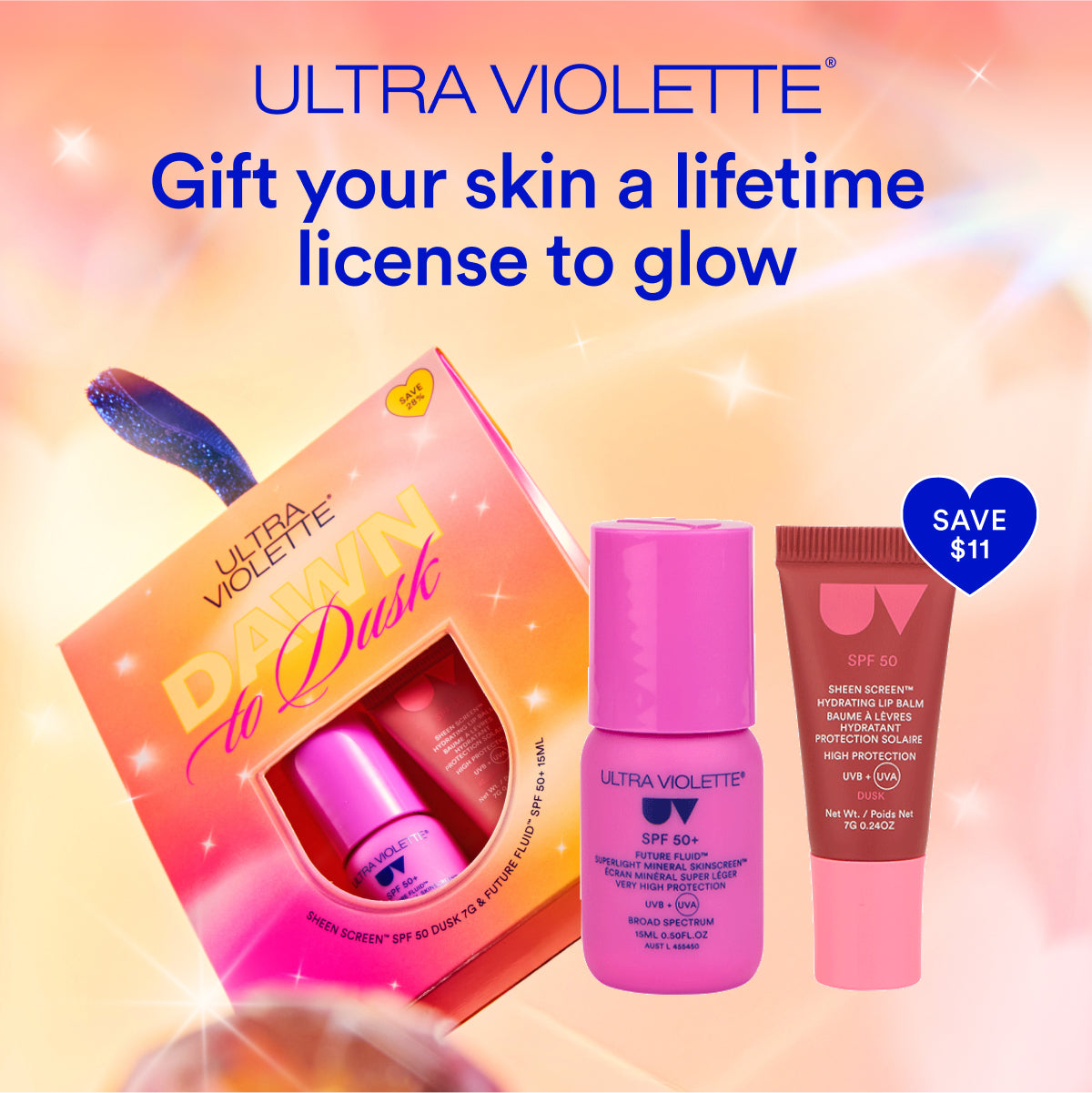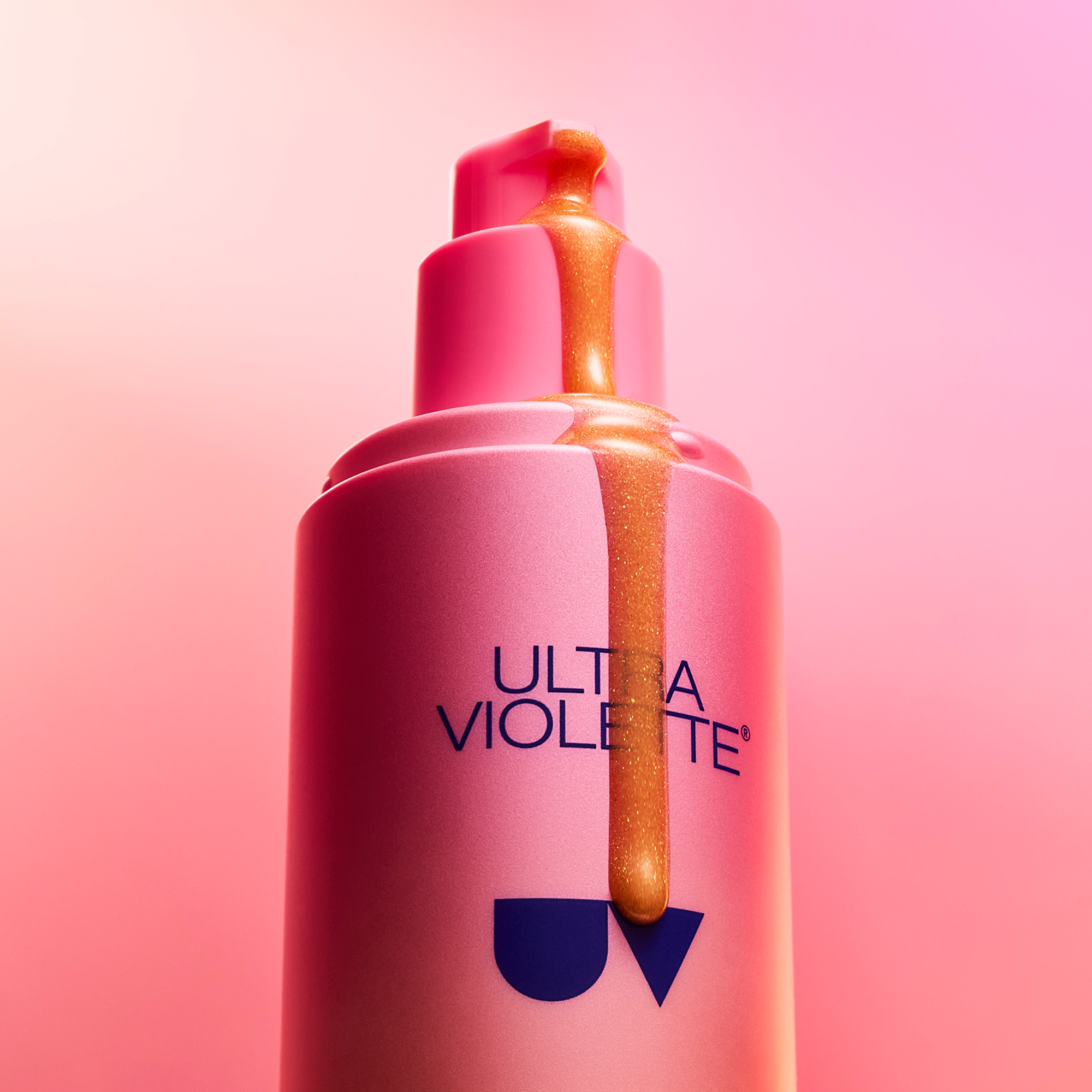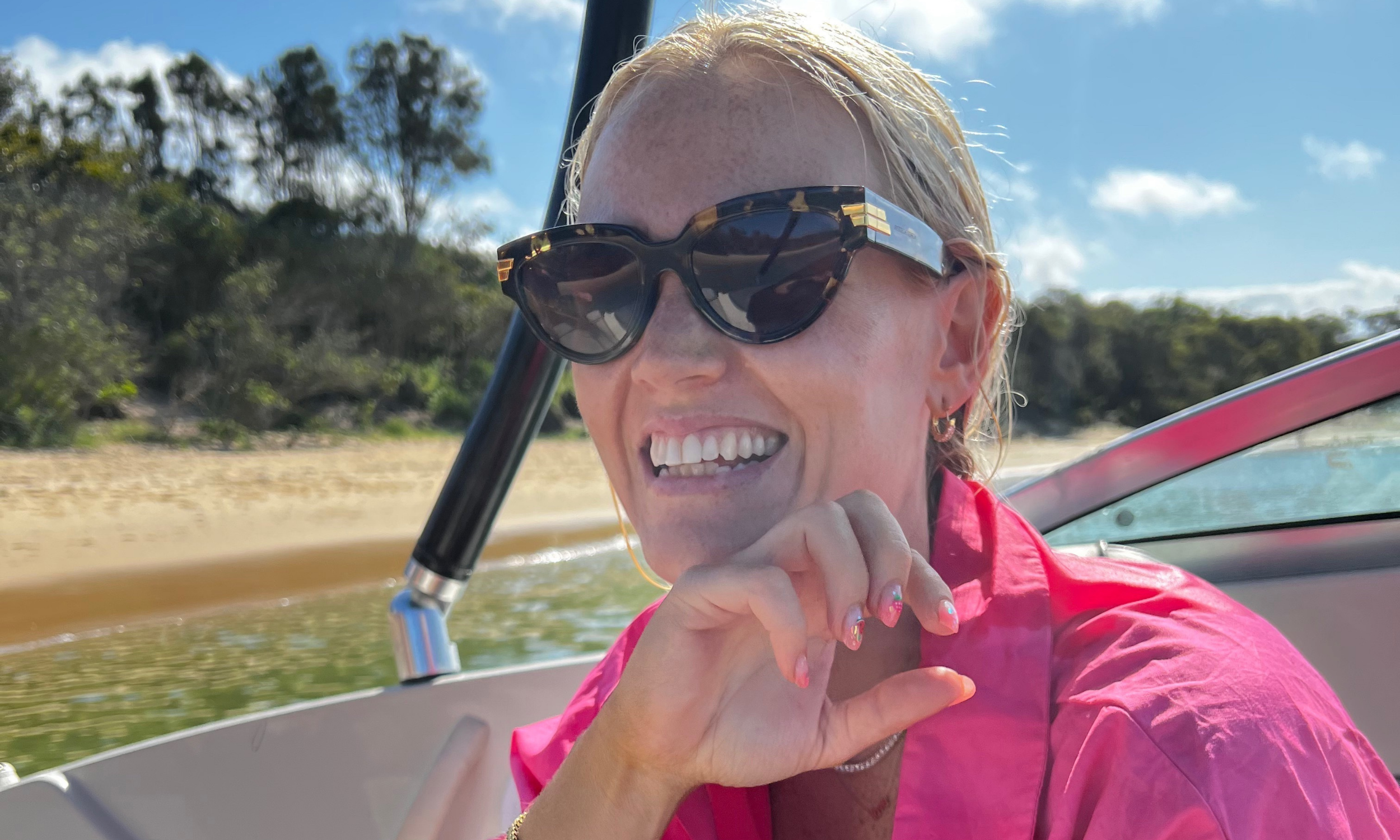If you’ve ever wondered why Vi insists you wear SPF even when indoors, pull up a chair. We’re about to take a deep dive into UV exposure, and there’s some science-y stuff ahead. (Dw, it’s introductory, so no PhD required.) Ahead, you’ll discover why UV rays can be more toxic than an ex and when to call Vi in for backup.
First, a refresher on UV radiation. UV light is made up of UVB and UVA rays. UVB are the kind that burn and play the biggest role in skin cancer. UVA are most associated with ageing but are also linked to skin cancer. SPF ratings are an indicator of how protected you are from burning, so they’re mainly about UVB.
What about the UVA rays?
In Australia, ‘broad spectrum’ means that your sunscreen filters both UVA and UVB, but some OS brands use the PA system for more info on the strength of the UVA protection. Common in Japan and Korea, it measures how much UVA you can theoretically handle without getting pigmentation or tanning of the skin. (We don’t use the PA system, but depending on what other brands you’ve used you might’ve come across it.)
Why does Vi reckon I should wear sunscreen indoors?
Most people don’t spend their entire day in a windowless room. And even if you did, it’s pretty likely you’d duck out to pick up a coffee/drop the kids to school/go for a walk at some stage. Health authorities say you should wear SPF on days the UV index is three or above. So if you’re not checking that every time you leave the house, maybe just apply your sunscreen daily? Making SPF part of your morning routine just makes sense.
But what if I do spend my days in a windowless room?
Um. Blink twice if you need help, okay?
Jokes aside, most of us spend our time indoors in spaces with windows. Even if your bedroom is windowless (the housing market amirite), you more than likely move through rooms with natural light during the day. And while you may have heard that window glass blocks UVB rays, it only blocks some of the UVA rays. So, even though you’re indoors you’re still getting some sun exposure. It’s really tricky to figure out how much.
How intense is the sun exposure I’m getting indoors?
It can be helpful to think about sun exposure as either direct or indirect. Direct is when the sun is literally shining on you. So, maybe you’re standing on the sand at the beach and there’s nothing in between you and the fiery ball in the sky. Indirect exposure is when the UV rays are bounced off of something else and onto you. Say you’re at the beach again, except this time you’re standing under the shade of some trees. The UV rays are still reaching you, only this time they’re reflecting off of the water and then onto you. Make sense?
Yep, but what does that have to do with being inside?
You’ve probably figured out by now that the UV exposure you get indoors is indirect. The level of sun protection you’ll have at your place will vary depending on roughly a bazillion things including the features of the room (how many windows are there? Is there an awning? Are there trees or other buildings around?) and where you are within it (Close to the window/s?). There are other things to consider too. What is your skin tone? (The more melanin, the more natural protection.) How much skin do you have exposed? What time of day is it? What’s the UV rating? Without getting bogged down in the details, there is a lot to consider.
Unless you’ve got a science degree and lots of spare time on your hands, it’s unlikely you’re going to sit down and nut out how much UV you’re being exposed to while indoors on any given day. And even if you did do those calculations (babes, has no one told you Inventing Anna is now on Netflix?), you’d be hard-pressed to calculate how susceptible your skin is to sun damage under all sorts of varying conditions with any precision.
OK, so wearing SPF indoors is kinda like extra insurance?
Exactly. If you’re keen to ward off premature ageing, Vi recommends applying your fave Skinscreen to minimise incidental exposure. (Especially if you’re using skincare that can increase sensitivity to the sun!) If you’re really not gonna leave the house and you don’t plan on sitting near a window all day, there might be days you wanna skip sunscreen. Before you do, please just have a think about your skin cancer risk factors.
These may include:
-
Previous skin cancer
-
Family history for skin cancer and melanoma
-
Skin tone (pale and freckly types are more at risk)
-
A high mole count
-
Red or light hair and light-coloured eyes
-
History of tanning or using solariums
-
A job working outdoors
-
A weakened immune system
-
Certain skin conditions
The more you know! Got it.
Good! Obvi, Vi is about future-proofing your face, so she’s gonna rep Skinscreen on the daily. Made to slot right into your morning ritual, each formula is jam-packed with skin-friendly ingredients for extra beauty benefits. So go on,
add Skinscreen to your skincare lineup every day to keep your skin pretty and protected.
TL;DR
Even indoors, UVA rays can sneak through windows and cause premature ageing and skin damage, while quick trips outside add up to daily UV exposure. The easiest way to future-proof your face and reduce your skin cancer risk is to make broad spectrum SPF part of your morning routine — rain, shine, or Netflix marathon.
Always read the label. Follow the directions for use. Avoid prolonged high-risk sun exposure. Wear a hat, protective clothing and sunglasses when exposed to the sun. Re-apply frequently.




